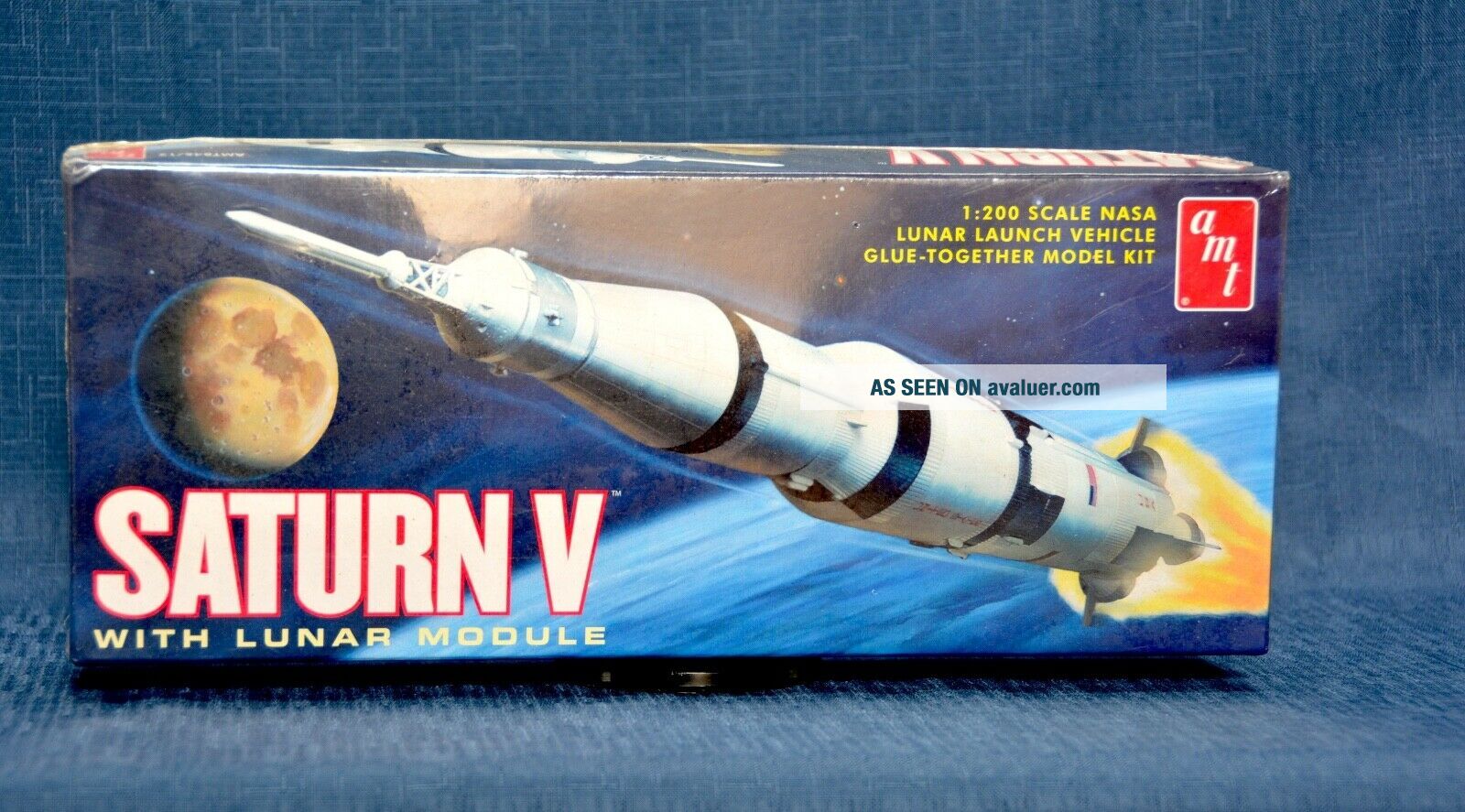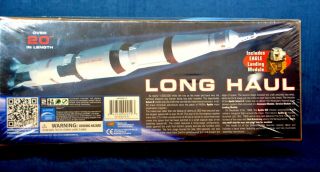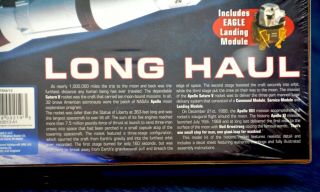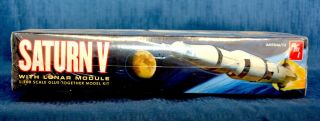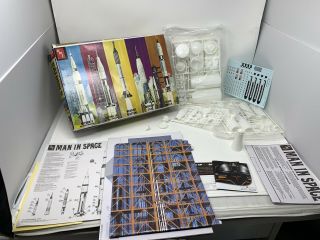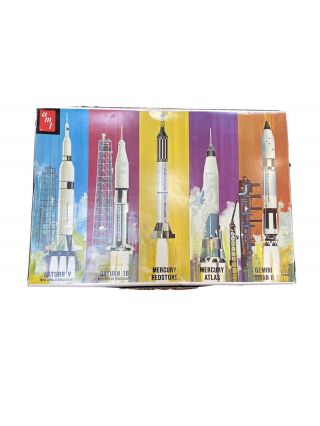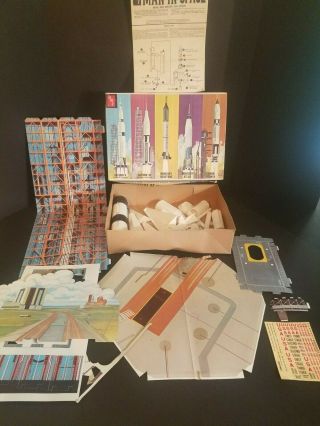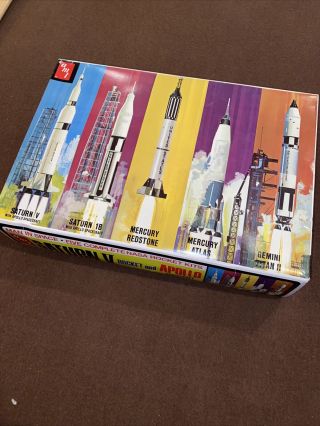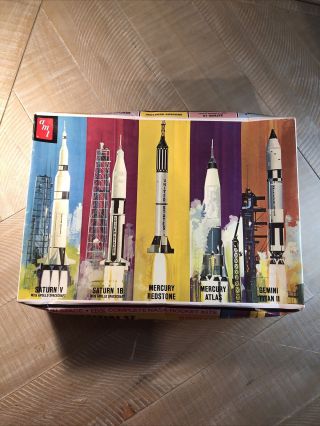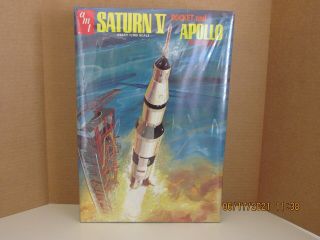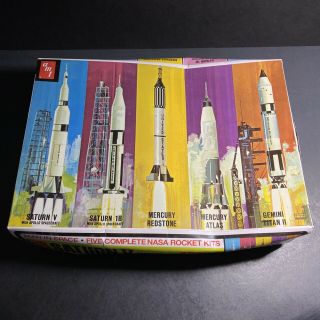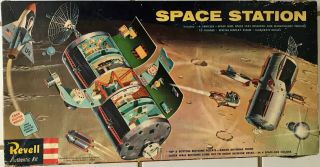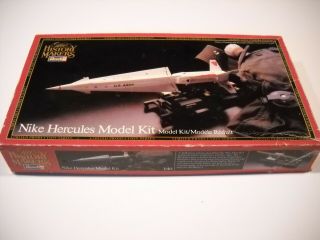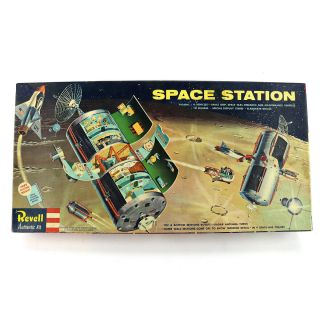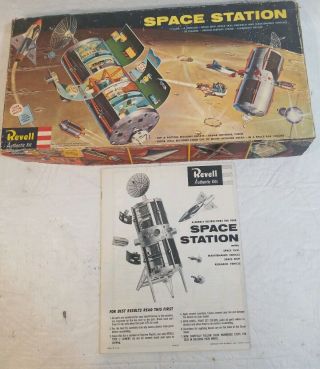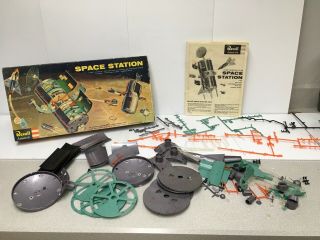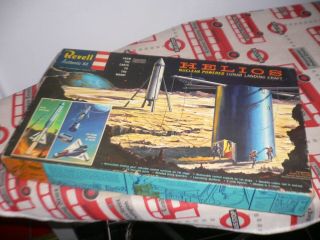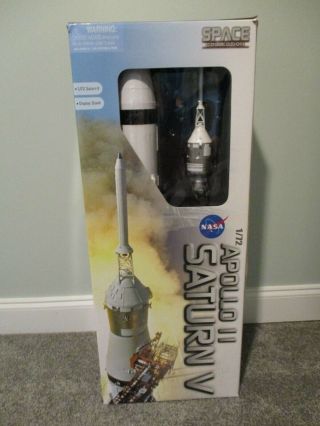AMT SATURN V ROCKET With Lunar Module 1:200 Scale NASA Model Kit
Item History & Price
| Reference Number: Avaluer:2999659 | Scale: 1:200 |
| Character Family: APOLLO XI | Features: Kit |
| Brand: AMT | MPN: AMT846/12 |
SATURDAY JULY 20TH MARKED THE 50TH ANNIVERSARY OF THE GREATEST SCIENTIFIC ACHIEVEMENT OF MANKIND! CELEBRATE WITH THIS RARE MODEL KIT! A PERFECT GIFT!
NEW AMT Saturn V with Lunar Module!1:200 Scale NASA Model Kit - AMT 846
There is no real-life spacecraft more iconic and world-renowned than USA's Saturn V rocket used to power the Apollo 11 moon landin...g!
Recreates the real-life Saturn V rocket used to power the Apollo XI moon landing! Glue and paint required, not included.1:200 scale kit measures 20-inches long when assembled! This Saturn V Rocket with Lunar Module 1:200 Scale Model Kit recreates the rocket in authentic detail. The kit is engineered to allow friction fit joints between stages and includes the Eagle lunar landing module!Authentic marking decals are included to complete the model.Glue and paint required, not included. Skill level 2. Ages 10 and up.
1/200 Scale Saturn V Rocket Plastic Model Kit:A great educational project, with eagle lunar orbiter included in the kit!!Waterslide decals make it live, and an illustrated instruction are also provided to help you create this awesome model
The 1/200 scale AMT Saturn V with Lunar Module is a simple kit to build and accurately represents one of the most historically significant events in world history.
This is a great kit to get kids interested in modeling and history!Recommended for anyone interested in America's space program.
CELEBRATE 50TH ANNIVERSARY THE MOON LANDING WITH THIS SOPHISTICATED ELEGANT MODEL KIT!
The Saturn V was a rocket NASA built to send American astronauts to the moon. (The V in the name is the Roman numeral five.) The Saturn V was a type of rocket called a Heavy Lift Vehicle. That means it was very powerful. It was the most powerful rocket that had ever flown successfully. The Saturn V was used in the Apollo program in the 1960s and 1970s. It also was used to launch the Skylab space station. The Saturn V rocket was 111 meters (363 feet) tall, about the height of a 36-story-tall building, and 18 meters (60 feet) taller than the Statue of Liberty. Fully fueled for liftoff, the Saturn V weighed 2.8 million kilograms (6.2 million pounds), the weight of about 400 elephants. The rocket generated 34.5 million newtons (7.6 million pounds) of thrust at launch, creating more power than 85 Hoover Dams. A car that gets 48 kilometers (30 miles) to the gallon could drive around the world around 800 times with the amount of fuel the Saturn V used for a lunar landing mission. It could launch about 118, 000 kilograms (130 tons) into Earth orbit. That's about as much weight as 10 school buses. The Saturn V could launch about 43, 500 kilograms (50 tons) to the moon. That's about the same as four school buses. The Saturn V was developed at NASA's Marshall Space Flight Center in Huntsville, Ala. It was one of three types of Saturn rockets NASA built. Two smaller rockets, the Saturn I (1) and IB (1b), were used to launch humans into Earth orbit. The Saturn V sent them beyond Earth orbit to the moon. The first Saturn V was launched in 1967. It was called Apollo 4. Apollo 6 followed in 1968. Both of these rockets were launched without crews. These launches tested the Saturn V rocket. The first Saturn V launched with a crew was Apollo 8. On this mission, astronauts orbited the moon but did not land. On Apollo 9, the crew tested the Apollo moon Lander by flying it in Earth orbit without landing. On Apollo 10, the Saturn V launched the lunar Lander to the moon. The crew tested the Lander in space but did not land it on the moon. In 1969, Apollo 11 was the first mission to land astronauts on the moon. Saturn V rockets also made it possible for astronauts to land on the moon on Apollo 12, 14, 15, 16 and 17. On Apollo 13, the Saturn V lifted the crew into space, but a problem prevented them from being able to land on the moon. That problem was not with the Saturn V, but with the Apollo spacecraft. The last Saturn V was launched in 1973, without a crew. It was used to launch the Skylab space station into Earth orbit.
The Saturn V was launched 13 times from the Kennedy Space Center, in Florida, with no loss of crew or payload. As of 2019, the Saturn V remains the tallest, heaviest, and most powerful rocket ever brought to operational status, and holds records for the heaviest payload launched and largest payload capacity to Low Earth Orbit (LEO) of 140, 000 kg (310, 000 lb), which included the third stage and unburned propellant needed to send the Apollo Command Service Module and Lunar Module to the Moon. The largest production model of the Saturn Family of rockets, the Saturn V was designed at the Marshall Space Flight Center in Huntsville, Alabama, with Boeing, North American Aviation, Douglass Aircraft Company, and IBM as the lead contractors.To date, the Saturn V remains the only launch vehicle to carry humans beyond low Earth orbit. A total of 15 flight-capable vehicles were built, but only 13 were flown. An additional three vehicles were built for ground testing purposes. A total of 24 astronauts were launched to the Moon, three of them twice, in the four years spanning December 1968 through December 1972.Apollo 11, launched on 16 July 1969, would be the first landing mission. LM-5, piloted by Neil Armstrong and Edwin Aldrin, landed successfully on the Lunar surface on 20 July 1969. Apollo 11 was the spaceflight that first landed humans on the Moon. Commander Neil Armstrong and lunar module pilot Buzz Aldrin, both American, landed the Apollo Lunar Module Eagle on July 20, 1969, at 20:17 UTC. Armstrong became the first person to step onto the lunar surface six hours 39 minutes later on July 21 at 02:56 UTC; Aldrin joined him 19 minutes later. They spent about two and a quarter hours together outside the spacecraft, and collected 47.5 pounds (21.5 kg) of lunar material to bring back to Earth. Command module pilot Michael Collins flew the command module Columbia alone in lunar orbit while they were on the Moon's surface. Armstrong and Aldrin spent 21 hours 31 minutes on the lunar surface at a site they named Tranquility Base before lifting off to rejoin Columbia in lunar orbit. Apollo 11 was launched by a Saturn V rocket from Kennedy Space Center on Merritt Island, Florida, on July 16 at 13:32 UTC, and was the fifth crewed mission of NASA's Apollo program.
The Apollo spacecraft had three parts: a command module (CM) with a cabin for the three astronauts, and the only part that returned to Earth; a service module (SM), which supported the command module with propulsion, electrical power, oxygen, and water; and a lunar module (LM) that had two stages – a descent stage for landing on the Moon, and an ascent stage to place the astronauts back into lunar orbit. After being sent to the Moon by the Saturn V's third stage, the astronauts separated the spacecraft from it and traveled for three days until they entered lunar orbit. Armstrong and Aldrin then moved into Eagle and landed in the Sea of Tranquility. The astronauts used Eagle's ascent stage to lift off from the lunar surface and rejoin Collins in the command module. They jettisoned Eagle before they performed the maneuvers that propelled the ship out of the last of its 30 lunar orbits on a trajectory back to Earth. They returned to Earth and splashed down in the Pacific Ocean on July 24 after more than eight days in space. Armstrong's first step onto the lunar surface was broadcast on live TV to a worldwide audience. He described the event as:
"One small step for man; One giant leap for mankind."
Apollo 11 effectively ended the Space Race and fulfilled a national goal proposed in 1961 by President John F. Kennedy: "Before this decade is out, of landing a man on the Moon and returning him safely to the Earth."
At 12:52:00 UTC on July 20, Aldrin and Armstrong entered Eagle, and began the final preparations for lunar descent.At 17:44:00 Eagle separated from Columbia. Collins, alone aboard Columbia, inspected Eagle as it pirouetted before him to ensure the craft was not damaged, and that the landing gear was correctly deployed.
Armstrong exclaimed: "The Eagle has wings!”
SEE MY OTHER AUCTIONS FOR MORE APOLLO DO 50TH ANNIVERSARY GIFTS!GOOD LUCK BIDDING! GOOD LUCK WINNING!



